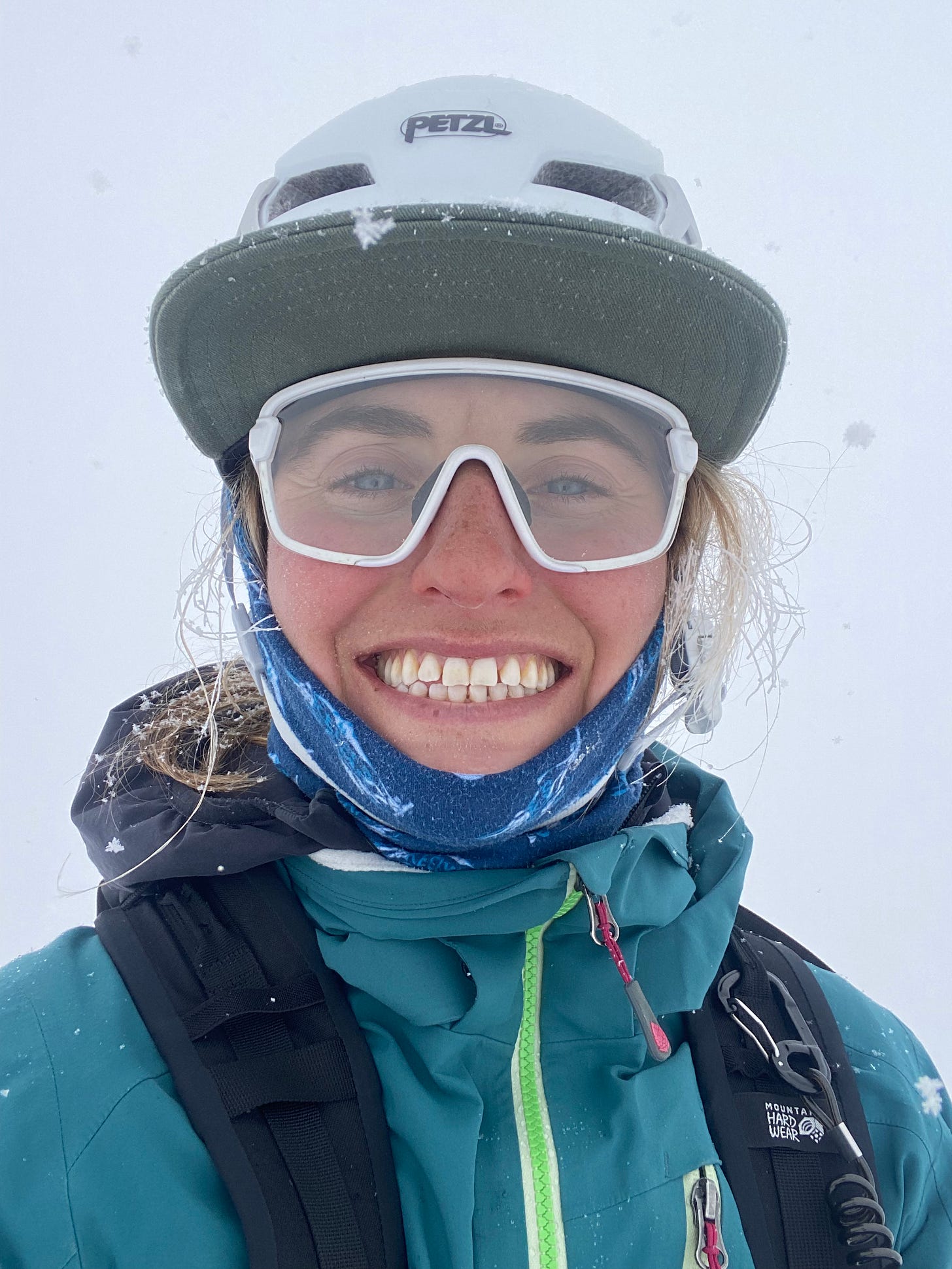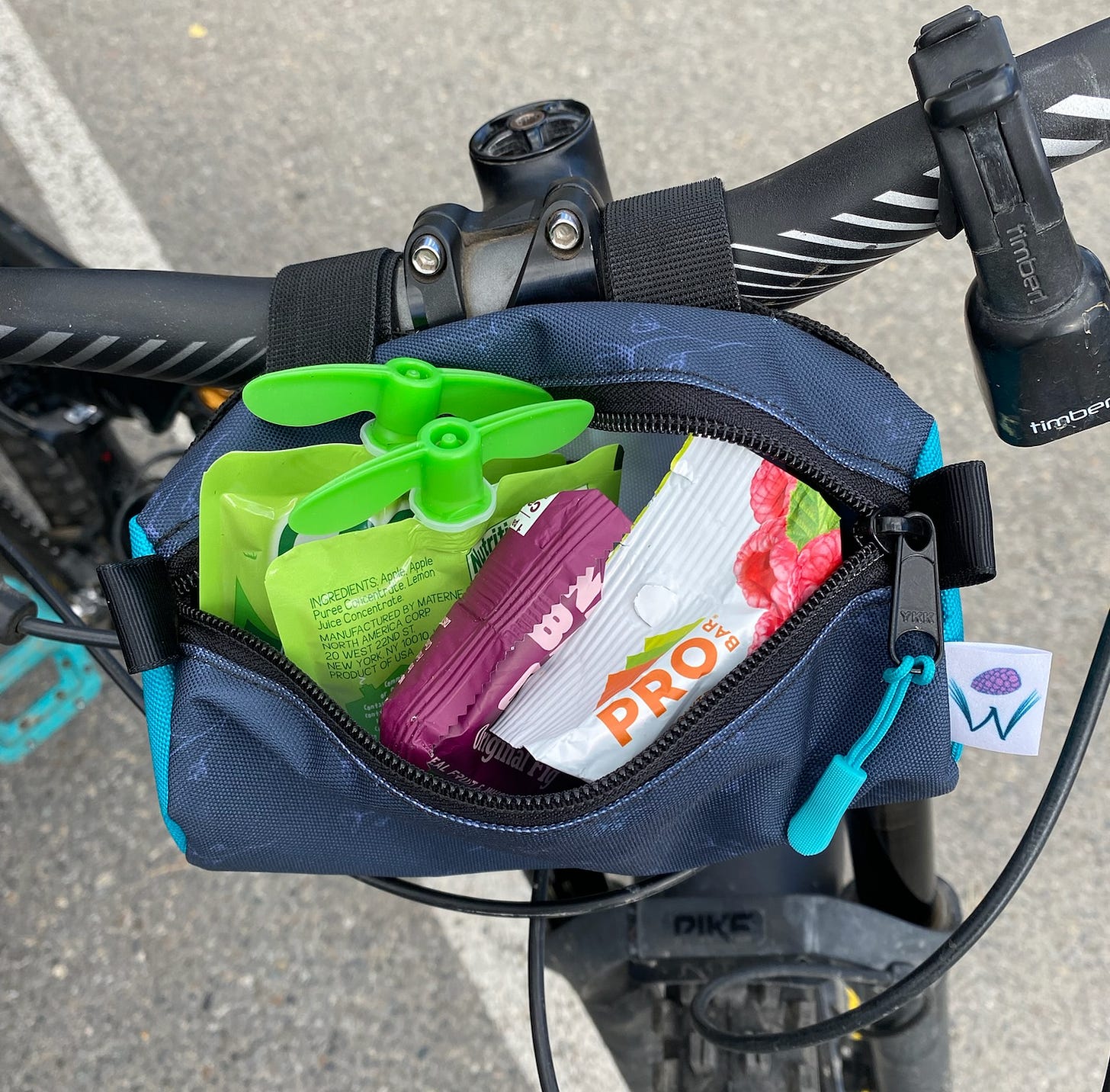I used to think I should just automatically feel good on the skin track or trail with a good night of rest and enough determination and skill.
It’s easy to get lost in the motion of moving. We fall into the familiar flow of the skin track, the trail, or the rhythm of upward pedal strokes. We follow our stoke for adventure, not necessarily pausing to examine how we feel — or what might make our adventure better.
Here’s the thing nobody tells you when you get into big days outside: You won’t feel good if you’re not fueling.
Learning to fuel yourself isn’t about finding the perfect gel. It’s about poking around, trying stuff, and laughing a lot when you get it wrong. It’s about being an explorer of your fueling.
So — here’s how to be an explorer of your fueling on the skin track or trail:
1. Treat every adventure like a field test.
Not just the big, epic days.
The post-work evening skins. The lunchtime rides. The Sunday movement.
Every session is a chance to notice: What did I eat before? When did I eat it? How did I feel an hour in? A couple hours in? Did I feel energized — or did my fuel sit heavy in my gut?
You don’t have to be an elite athlete to do this. Be an explorer of how your body feels. Get curious. Put on your scientist glasses instead of just wondering why.
2. Stop hoping for the “perfect” fuel.
There’s no universal golden ticket snack. Everyone is individual. Some days, gummies will be your saving sugar boost. Other days you might need salted potatoes or PB tortillas.
The point isn’t to find the one thing that always works.
The point is to build a whole toolbox — different fuels for different days, moods, temps, and efforts.
Foods eaten on backcountry ski tours might not sit the same as they do when running. My explorer tests have led me to figure out that while pumpkin bread and Fig Bars may be skiing staples, Lara Bars, Skratch sour cherry chews, and tortillas with honey work better for running.
Also: sometimes we don’t always need the fancy sports nutrition products. Some of the best fuel is shockingly normal.
And yes, you can bring the peach rings or twin snakes instead of sports-specific chews.
3. Know that cold, altitude, and fatigue are wildcards.
At 9,000+ feet, in freezing temps, or after hours of effort, your appetite doesn’t behave.
You won’t always “feel” hungry. You might even feel slightly nauseous. Your brain might try to convince you that a sip of water is plenty.
It’s not.
Fuel early. Fuel often. Even little bites is better than nothing.
Test out what works at low and high elevation — because spoiler: it might vary.
I went on one tour this season, definitely exhausted after a couple of big days in a row.
After a few hours, even the thought of sweet gummies, cookies, or applesauce made me queasy. (These were foods I knew would give me quick energy — and yet my body was like, “Absolutely not.”)
That’s where savory options come in. A plain tortilla with peanut butter, some salted snacks — anything to switch up the flavor profile while still giving your body something to work with.
It was a solid reminder: with fatigue, altitude, sweat, and effort, what your body craves may totally change.
Put yourself in these situations and explore that side of fueling too.
4. Pack like a snack fairy.
In order to be an explorer of your fueling, you’re going to have to bring options.
There are days to be fast and light. But figuring out what works for you takes a little extra room — at least until you have it dialed.
Bring more food than you think you'll need.
Bring more types than you think you'll crave.
Throw in something salty, something sweet, something simple.
Maybe it’s the dietitian in me, but seriously: pack a few extra snacks. Bring the extra gummies.
You might be running a little tired from a busy week — and when you’re tired, you might need a little extra energy.
Trust me, you’d rather finish strong than ragged. I’ve been the friend many times with the emergency gummies at the end of a long day — and my friends have thanked me for it.
5. Pay attention to what happens later, too.
Getting back to the car isn’t the finish line. How you feel hours (and even days) later tells you everything about how you fueled. Don’t put away your explorer brain when the adventure ends.
Cravings late at night?
Soreness that sticks around?
Feeling like you got steamrolled by a truck?
Your fueling during the adventure and your recovery after are tied together. If you under fuel during, you’re often putting yourself in an energy deficit — one that’s hard to dig out of with just a post-meal.
What sounds good after a ski day in the winter?
Does it stay the same in the summer?
Do you feel better after a burger and sweet potato fries — or a huge salad loaded with roasted potatoes, veggies, chicken, goat cheese, and a thick slice of bread with butter?
Take notes.
6. Make it fun.
Learning what works for you should feel like part of the adventure, not a tedious chore.
Try weird snack experiments. Try the instagram homemade granola bar or cookie. Trade snacks with friends. Carry the cookie and gummy bears and some salami, cheese, and bread and see which one calls your name at hour four.
Fueling isn’t about doing it perfectly. It’s about finding what keeps you happy, energized, and moving — even when the miles and hours stack up.
It doesn’t have to be stressful! Enjoy packing various snacks. Mess around with your friends. Get curious. Be your own explorer.








